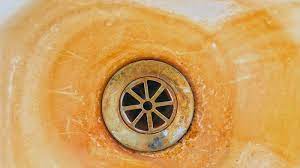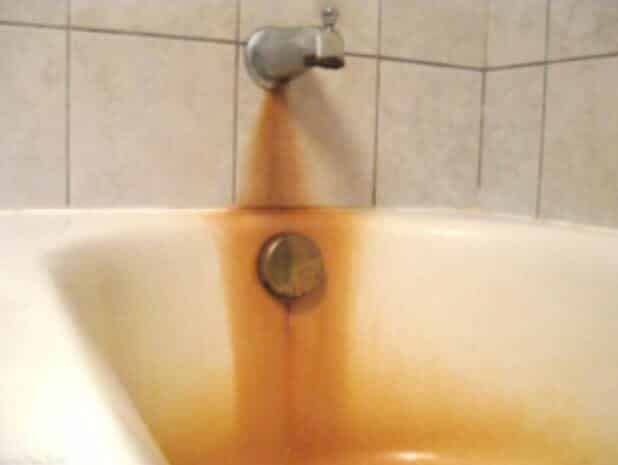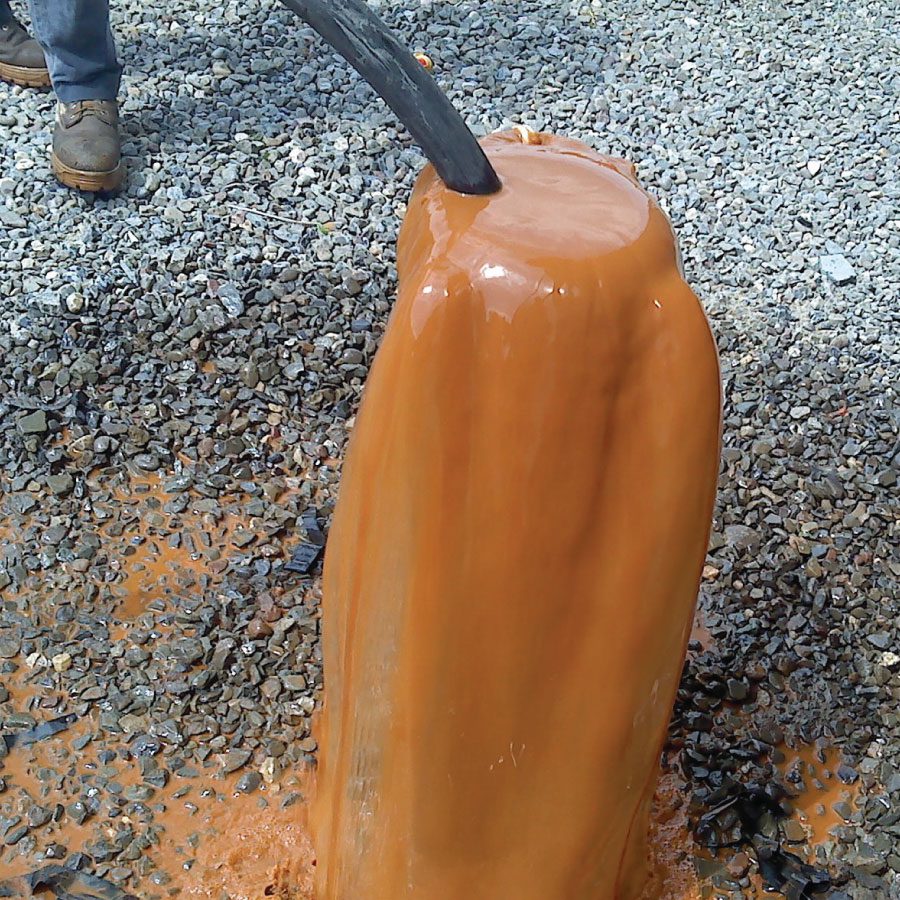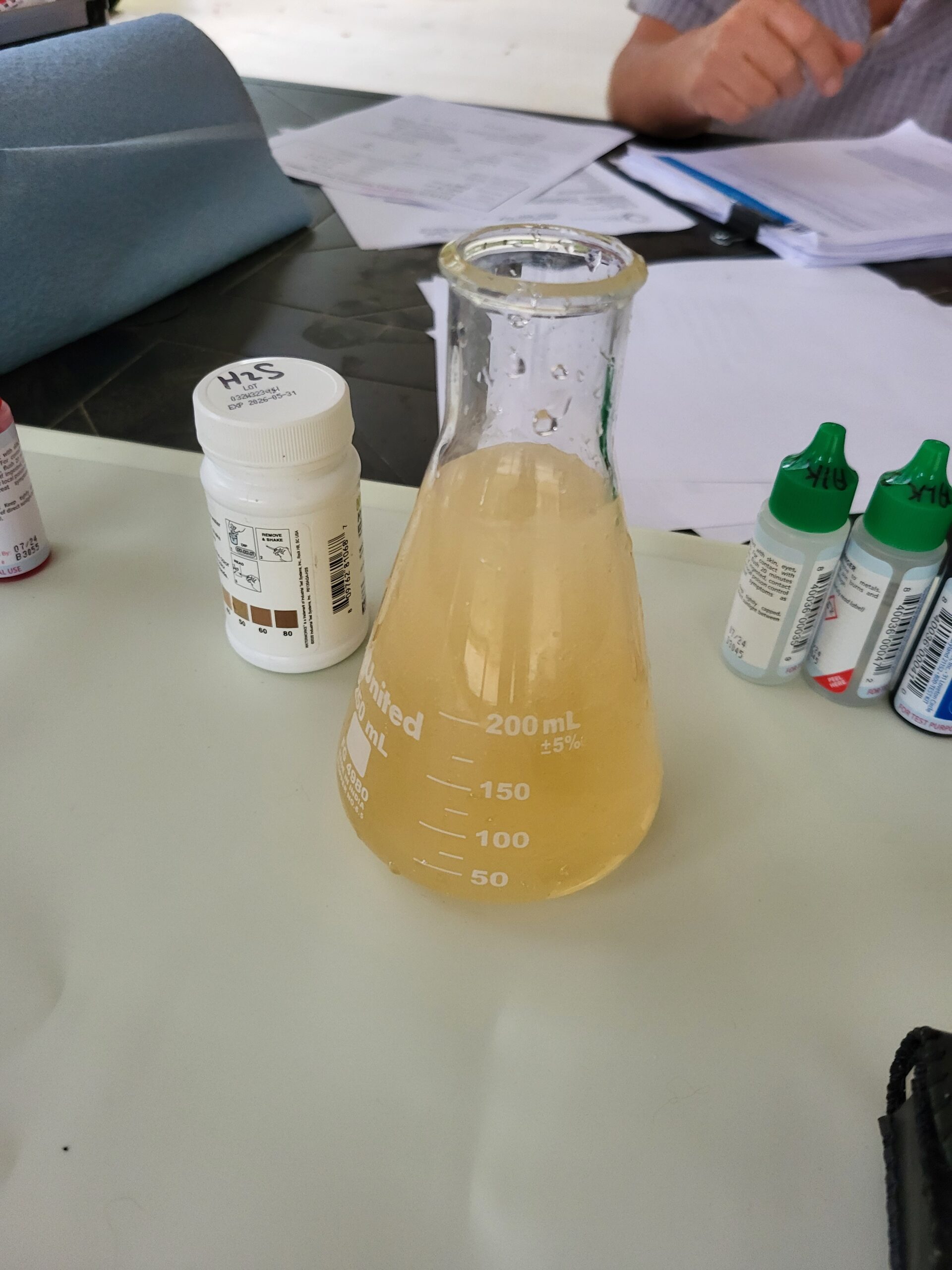Staining
Frustrated With Water Staining On Sinks, Tubs, And Toilets?
Water stains resulting from metals, tannins, lignin or any other contaminant in the water, will affect fixtures and appliances found throughout the entire home or business. These stains show up in all sorts of colors : pink, rust or reddish, blackish, dark brown, and green stains.
Orange/Red Water Stains
Water stains resulting from metals, tannins, lignin or any other contaminant in the water, will affect fixtures and appliances found throughout the entire home or business. These stains show up in all sorts of colors: pink, rust or reddish, blackish, dark brown, and green stains.
White Stains/Spotting
Hard Water contains large amounts of minerals such as potassium, silica, magnesium and calcium which can cause white staining or spotting also known as lime scale build-up on and around your fixtures, shower doors, glassware and silverware. Water stains and spots develop on surfaces when water evaporates and the leftover minerals accumulate, making a dull patch on the surface.
Yellow Water Stains
If you have yellow tint to your water or yellow stains around you drains, this may be caused by natural organic material known as Tannin. Tannin are a bitter-tasting organic substance present in some galls, barks, and other plant tissues, consisting of derivatives of gallic acid, used in leather production and ink manufacture. Some times tannin cause water to have a tart aftertaste (similar to tea) and an earthy odor.
Blue-Green Water Stains
All of the above are treatable! Having your water tested is the best place to start. The fix maybe a single filter or it may require a combination of filters, in a specific order.
A properly configured Reverse Osmosis system will remove hard water spots that contains any staining property from drinking water in texas.
What causes iron stains?
Iron comes in two not-so-delicious flavors: ferrous and ferric. Ferrous iron is also called “clear water iron” because you can’t actually see it in your water. However, after water evaporates off your sinks, toilets, showers, faucets, and fixtures, BAM! You’ve got a reddish orange stain left behind. It literally rusted!
Ferric iron is known as “red water iron” because you can see the discoloration in the water as it runs out of your faucets. This type of iron is typically easier to clean off your sinks, tubs, showers, and fixtures and can typically be filtered out of your water. Ferrous iron must be oxidized first and then filtered. If you don’t have a tremendous amount of ferric iron, it can also be treated through a natural process called ion exchange.
The treatment of each type of iron can be a bit tricky and many water professionals will shy away from these situations, leaving the customer with little to no options.
Tired of Dealing with Stubborn Stains?
Solve The Problem With A Water Softener And Filter
Stubborn stains caused by hard water can be a constant source of frustration. The good news is that you can effectively address this problem by utilizing the hard water stains removal.
A water softener tackles the root cause of staining by removing the minerals responsible for hard water stains, such as calcium and magnesium ions. By reducing the mineral content, a water softener helps prevent the buildup of limescale on fixtures, sinks, and appliances. This results in cleaner surfaces that are free from unsightly stains caused by mineral deposits.





